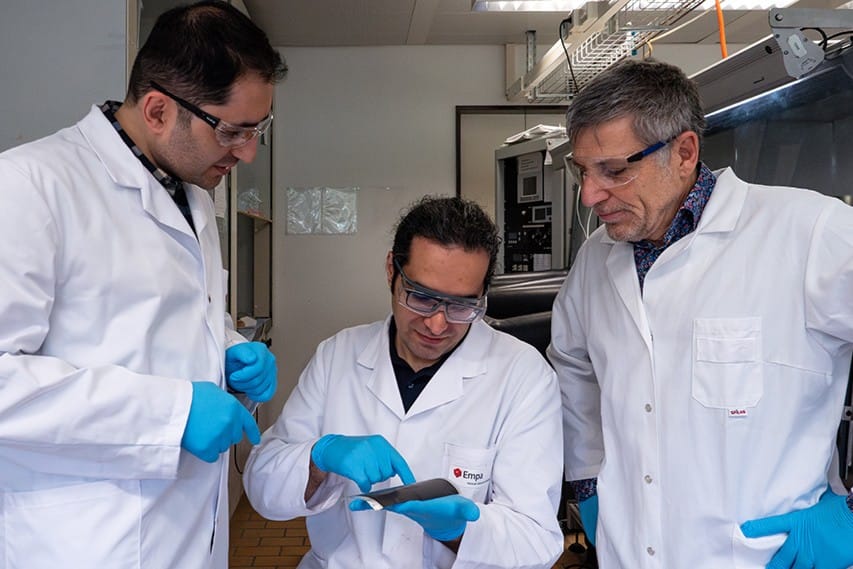Empa develops scalable graphene supercapacitors for industrial EV applications
Empa researchers are advancing supercapacitor technology by developing graphene-based electrodes tailored for industrial-scale manufacturing. The team aims to address both energy density and scalability challenges to support applications ranging from electric vehicles to renewable energy systems.
“Supercapacitors store energy electrostatically by depositing as many charged particles as possible on the surface of the electrode,” said Jakob Heier, head of the Functional Thin Film Solution Processing group at Empa. Unlike batteries, which rely on chemical reactions and have higher energy density but slower charge and discharge rates, supercapacitors can rapidly absorb and release energy but store less. Their fast response times make them well-suited to regenerative braking systems in electric vehicles, as well as industrial machinery and wind energy systems, according to Empa.
Currently, most commercial supercapacitors use activated carbon as the electrode material due to its high surface area. However, “activated carbon has a very low electrical conductivity, which impairs the storage capacity of the electrode,” Empa explains in its press release. The use of binders and additives in the roll-to-roll electrode printing process further reduces porosity and performance.
Empa’s graphene-based alternative seeks to overcome these limitations. “If the pore size of the electrode is matched to the size of the ions in the electrolyte, the energy density of the supercapacitor increases dramatically,” said postdoctoral researcher Sina Azad. The team uses two types of graphene with different structural characteristics, allowing precise control over pore size and layer spacing.
This advancement is made possible by a proprietary exfoliation method developed in a previous project, enabling efficient and cost-effective conversion of graphite into high-quality graphene. The resulting printable graphene ink is compatible with roll-to-roll processing techniques already used in the industry.
The electrodes are engineered to deliver higher conductivity, defined pore structure, and improved ion accessibility—all factors that contribute to higher energy density and efficiency. Heier added: “We want to develop a real, reliable product,” Azad said. “At the end of the project, we want to bring our technology to market, either with industrial partners or with our own spin-off.”
Supported by Bridge, a joint programme of the Swiss National Science Foundation and Innosuisse, the research runs through 2028. The project not only targets electrode development but also aims to build working supercapacitor prototypes, define the process steps, and select compatible electrolytes. The long-term goal is to enable a new class of high-performance energy storage systems suitable for integration in electric mobility platforms.





0 Comments